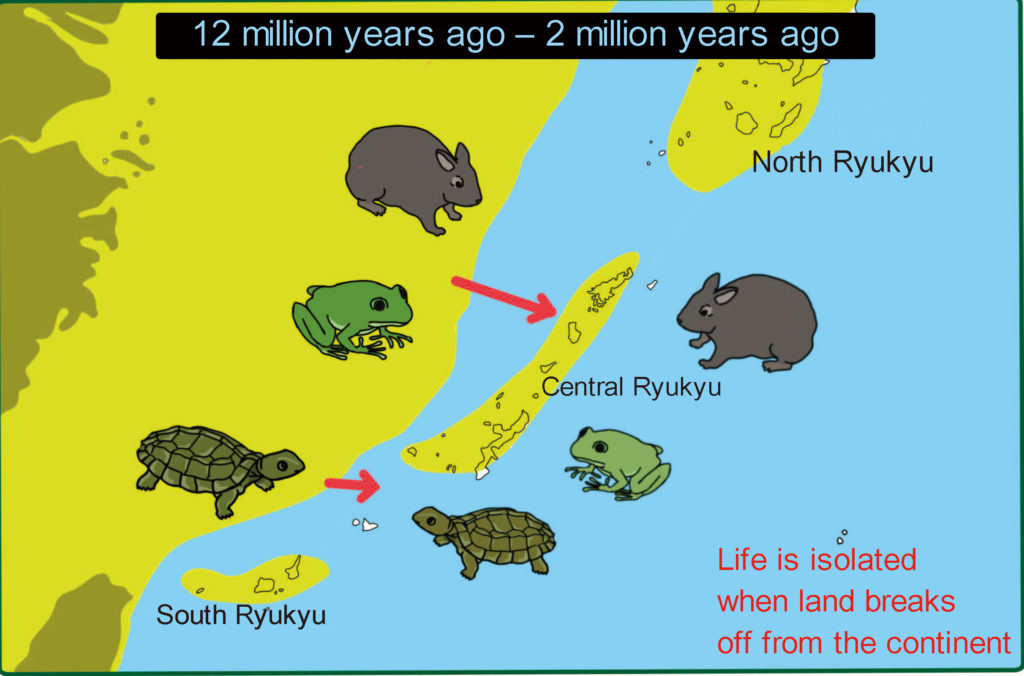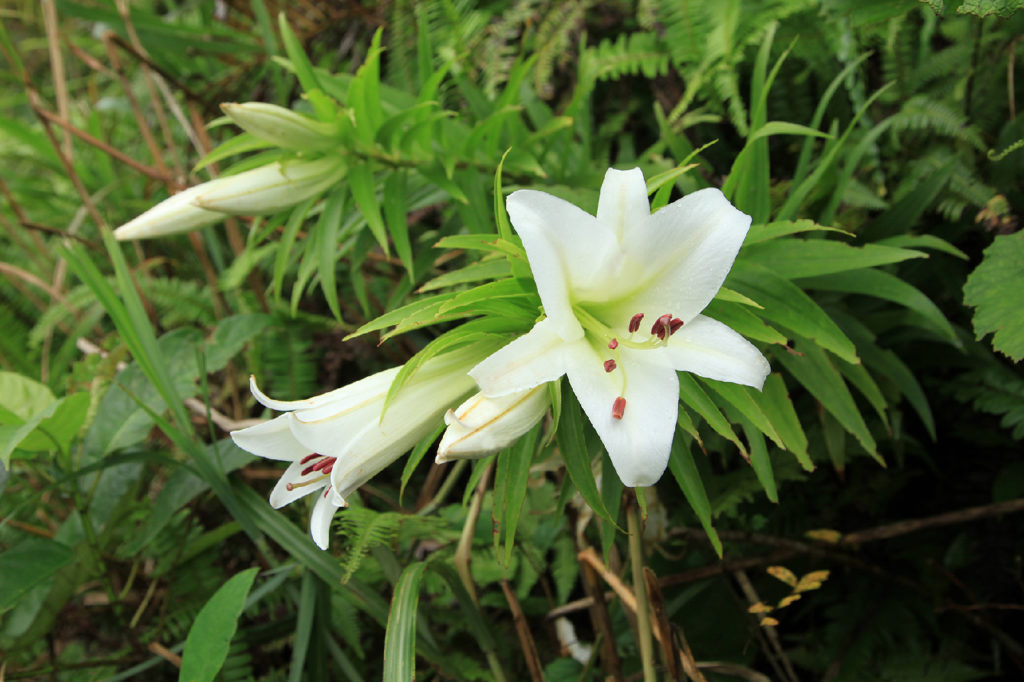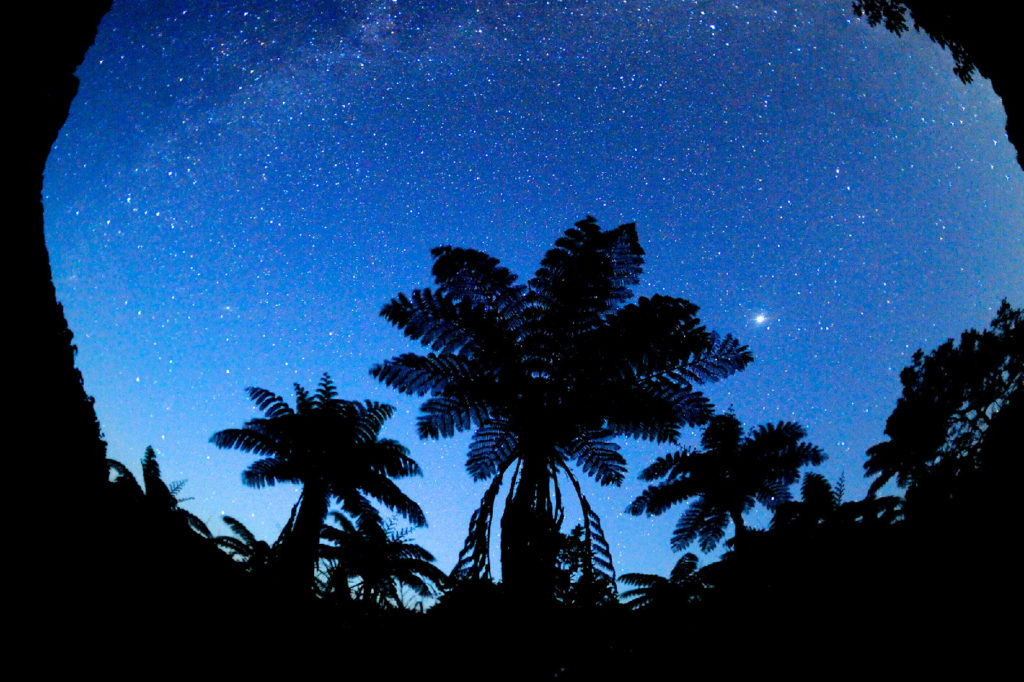
Plants of Forest
Where did the creatures come from?
About 10 million years ago, the archetype of the Southwest Islands was connected to the edge of mainland China. And it is believed that the flora and fauna didn’t immediately move to this wasteland, but the living things of the mainland began to migrate as this land slowly turned to jungle over time. Which begs the question: if the animals and the plants were branching out a little bit at a time, could it have been a joint migration?
We also know that the islands, with the new-resident plants and animals on them, separated and moved away from the continent little by little over several million years. The islands became isolated and effectively entered a quarantine in which evolutions unique to each island gradually took place. The high-altitude mountainous islands of the Amami Archipelago have forests and rivers that are home to the oldest types of flora and fauna with ancestors on the continent, such as the Amami Rabbit (Pentalagus furnessi) and the Anderson’s newt (Echinotriton andersoni). But there are differences in the distribution of these animals on each island, and many mysteries about how they were introduced still remain.


The creatures still living today are believed to be the descendants of those mammals, snakes and other creatures that evolved in the Miocene period (from 23 million to 53 million years ago) into new animal ancestors that perpetuated the species when Eurasia and the America continent were joined during the early Miocene.
Ocean surfaces are thought to have continued to rise until they had reached 100 m higher than current levels. This phenomenon was a particularly serious threat to sylvan plants and animals. Rain forests developed and many of the endemic species migrated from the continent to high-altitude Amami Oshima and Tokunoshima and were able to remain there, while sylvan endemic species were unable to survive on low-altitude Kikaijima, Okinoerabujima and Yoronjima.

Illustrations/Amami Design Workshop
Materials/Nature Conservation Division of the Kagoshima Prefectural Government





